



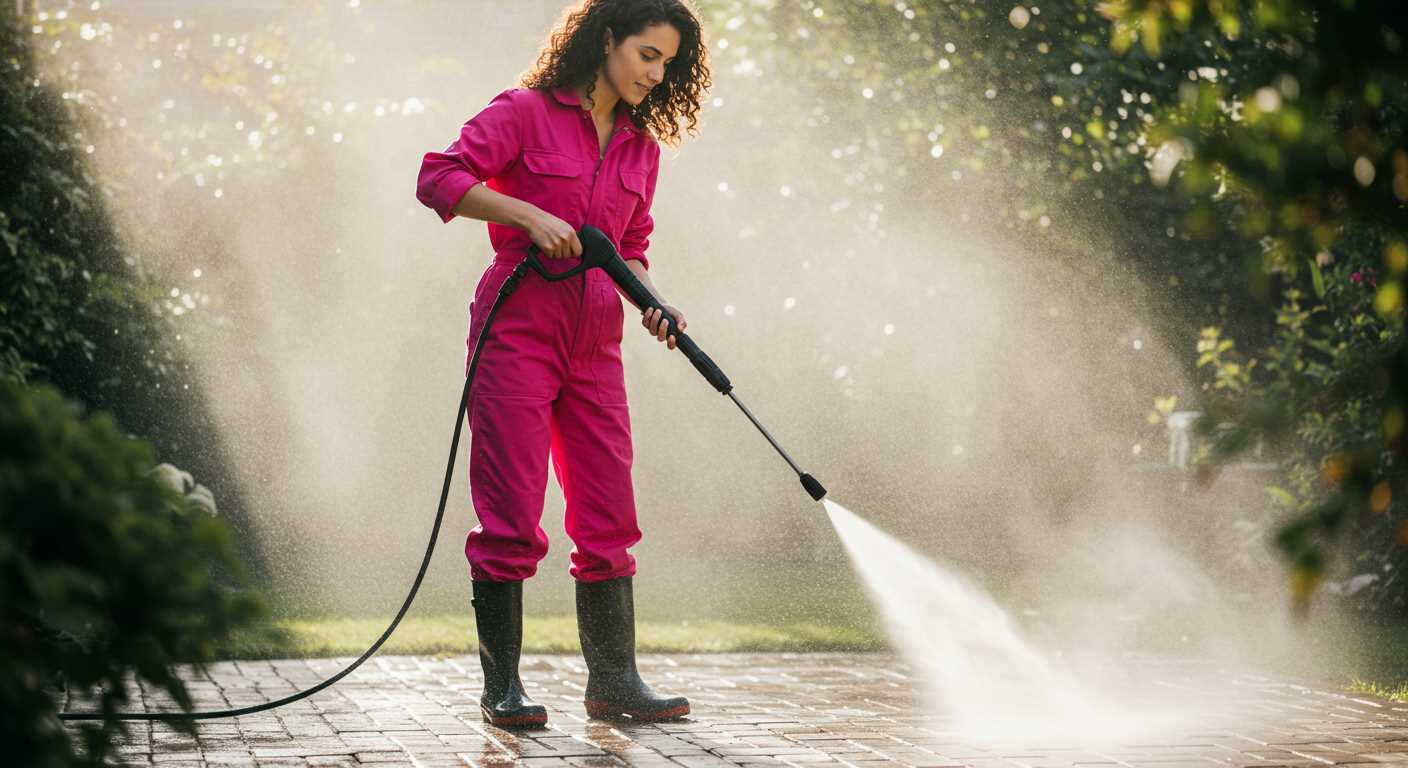
Using a high-pressure device isn’t the only way to restore the appearance of outdoor walkways. In my years as a consultant for cleaning equipment, I’ve found that there are several effective techniques to refresh surfaces without relying on that powerful spray.
One method that has proven effective is the combination of warm water and a mild detergent. A bucket filled with this solution, paired with a stiff-bristled brush, can do wonders. When I first tried this technique on my own patio, I was amazed at how much dirt and grime came off with just a bit of elbow grease. It’s a straightforward approach that doesn’t require special equipment.
Another option is to utilise a mixture of vinegar and baking soda. This combination acts as a natural abrasive and disinfectant. When I tackled the stubborn stains on my garden paths, I sprinkled the baking soda, followed by a splash of vinegar. The bubbling reaction lifted the grime effortlessly. After letting it sit for a few minutes, a simple scrub revealed a noticeably cleaner surface.
For regular maintenance, a broom or a leaf blower can help prevent the accumulation of dirt and debris. This proactive approach, which I adopted for my driveway, significantly reduced the need for deeper cleaning sessions. Keeping surfaces clear of leaves and dirt not only enhances their appearance but also extends their lifespan.
Lastly, don’t underestimate the power of a simple garden hose. While it may not deliver the same intensity as a high-pressure model, it can certainly remove loose dirt and debris effectively. I’ve often used my hose to give my walkways a quick rinse, especially after heavy rainfall. It’s a simple yet effective practice that keeps paths looking their best.
Understanding Different Types of Path Materials
Choosing the right method for maintaining various surface types is crucial. Each material has its unique characteristics that influence how it should be treated.
Natural Stone
Natural stone surfaces, such as granite or slate, offer durability but can be porous. Regular brushing with a stiff broom and a mild soap solution can effectively remove dirt and moss. For stubborn stains, a paste of baking soda and water works wonders. Rinse thoroughly to prevent residue.
Concrete and Pavers
Concrete and paver stones are popular for their versatility. A combination of warm water and white vinegar can help lift grime. For more extensive areas, a stiff-bristled brush paired with a gentle cleaning solution can restore their original appearance. Always ensure the area is well-drained to avoid future build-up.
For any material, it’s advisable to conduct a patch test in a less visible area to check for adverse reactions. Tailoring your approach to the specific type of surface will yield the best results and help maintain the aesthetic charm of your outdoor spaces.
Choosing the Right Cleaning Solution for Your Path
For effective maintenance, selecting the appropriate cleaning agent is paramount. While many may reach for harsh chemicals, natural alternatives often yield impressive results without damaging your surfaces. Here’s a guide to help you make an informed choice.
Types of Cleaning Solutions
- Vinegar and Water: A mixture of one part vinegar to three parts water works wonders for stone and concrete. It breaks down grime and mildew effectively.
- Baking Soda Paste: Combining baking soda with water creates a paste that can tackle stubborn stains. Apply it directly to the affected area, let it sit, then scrub.
- Castile Soap: This biodegradable soap is gentle yet powerful. Mix it with water for a safe solution that’s effective on various materials.
- Commercial Cleaners: There are specific products designed for different materials. Always read labels to ensure compatibility with your surface type.
Considerations for Selection
- Material Compatibility: Always consider what your surface is made of. Some solutions may etch or discolour certain materials.
- Environmental Impact: Opt for biodegradable products to minimise harm to your garden and surrounding ecosystem.
- Stain Type: Identify the nature of the stain–oil, dirt, or mildew–as this will inform your choice. For example, grease stains may require a degreaser.
- Safety: Ensure the solution is safe for both users and pets. Read product warnings and safety data sheets.
In my experience, I’ve found that opting for natural solutions not only protects the surfaces but also reduces the risk of harmful chemical exposure. For instance, using vinegar on my brick path removed years of accumulated dirt without any adverse effects. It’s fascinating how something as simple as a digital camera uses pixels for capturing clear images, similar to how the right cleaning solution clarifies and refreshes surfaces.
Choosing wisely ensures longevity and aesthetics for your outdoor spaces. Experiment with these options to find the best fit for your needs.
Tools You Can Use for Manual Cleaning
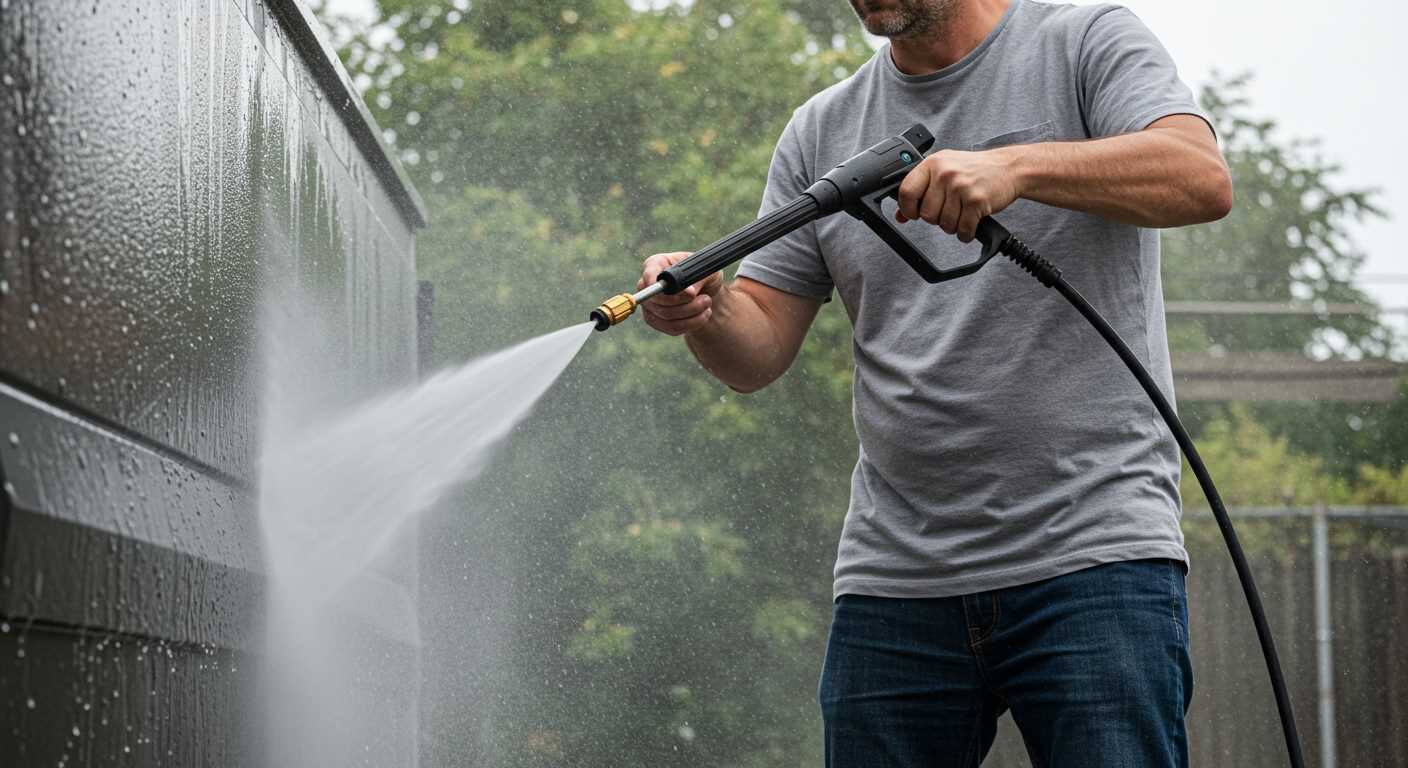
For effective manual maintenance of outdoor surfaces, a few specific tools stand out. A stiff-bristled broom is indispensable for removing loose debris and dirt. Opt for one with durable bristles that can withstand tough scrubbing. When paired with a good sweeping technique, this tool lays a solid foundation for deeper cleaning.
Next, consider a scrubbing brush. Models with long handles allow you to reach difficult spots without straining your back. Choose one with medium to stiff bristles to tackle stubborn stains, particularly on textured surfaces. A circular motion often yields the best results, allowing for even coverage and thorough dislodging of grime.
A garden hose with a spray nozzle is another basic yet effective tool. This allows for rinsing off surfaces after scrubbing. Adjustable nozzles can help control water pressure, making it easier to target specific areas without excessive force that could damage delicate materials.
For stubborn spots, a bucket filled with water mixed with a suitable cleaning solution is essential. A long-handled mop can also be useful for larger areas, providing a way to apply cleaning solutions evenly. After letting the solution sit for a few minutes, return with the scrubbing brush for a more rigorous clean.
If mould or mildew is a concern, a dedicated mould and mildew remover can be applied with a spray bottle. After letting it dwell, follow up with a scrubbing brush to eliminate any remaining traces. Always test on a small area first to ensure compatibility with the surface.
Lastly, consider investing in a car pressure washer and foam for those tough jobs. While this may not be strictly manual cleaning, having such equipment on hand can dramatically improve efficiency when needed.
Step-by-Step Guide to Cleaning Block Paving
Begin with a thorough inspection of the area to identify stains, weeds, or any debris that may have accumulated. Remove larger items like leaves and branches by hand or with a broom.
Next, prepare a solution of warm water and a suitable detergent or soap. I often opt for a gentle, pH-neutral cleaner that won’t damage the surface. Mix according to the instructions on the product label–this is where attention to detail pays off.
Once the solution is ready, apply it generously to the block paving using a watering can or a spray bottle. Allow it to sit for about 10 to 15 minutes. This dwell time helps to break down dirt and grime effectively.
For stubborn stains, consider using a stiff-bristled brush. Opt for a brush with synthetic bristles to avoid scratching the blocks. Work in small sections, scrubbing in circular motions. I’ve found that persistence here leads to great results.
After scrubbing, rinse off the area with clean water. A hose can be used for this purpose, ensuring all soap and debris are effectively washed away. Be careful with the water pressure; a gentle flow is sufficient to avoid displacing the blocks.
If there are remaining weeds in the joints, a narrow weeding tool or a putty knife can help. Insert it carefully into the gaps to remove the roots, ensuring they don’t regrow.
Once the surface is clean, allow it to dry completely. If desired, re-sand the joints with kiln-dried sand to stabilise the blocks and prevent shifting. Spread the sand evenly, and use a broom to help it settle into the joints.
Finally, consider applying a sealant designed for block paving. This can provide an additional layer of protection against future stains and weed growth. Follow the manufacturer’s instructions for application to achieve the best results.
Removing Weeds and Moss Without Chemicals
For a natural approach, boiling water is an excellent and straightforward method to tackle unwanted growths. Pouring boiling water directly onto the weeds or moss will effectively kill them. Be cautious with surrounding plants; aim for the target areas only.
Vinegar as a Natural Herbicide
White vinegar, with its high acetic acid content, serves as a potent natural herbicide. Spray it on the affected areas during dry, sunny weather for best results. The acid disrupts the cell structure of the plants, leading to their demise. Reapply if necessary, especially after rainfall.
Manual Removal Techniques
Pulling out weeds by hand is labour-intensive but highly effective. Use a weeding fork or a trowel to loosen the soil around the roots, making extraction easier. For moss, a stiff broom or wire brush can help dislodge it from surfaces. Regular maintenance will minimise regrowth and keep surfaces looking tidy.
Using a Broom and Scraper for Stubborn Dirt
For tackling persistent grime, a sturdy broom paired with a scraper can be remarkably effective. Start with a stiff-bristled broom to sweep away loose debris and dust. This step is crucial; it allows you to get a clearer view of the surface and identifies areas that require more attention.
Choosing the Right Broom
Select a broom with bristles that are tough enough to handle the dirt but gentle enough not to damage the surface beneath. For concrete or brick surfaces, a broom with synthetic bristles works well. If dealing with a more delicate material, consider natural bristles to prevent scratching.
Effective Scraping Techniques
After sweeping, use a scraper to dislodge stubborn stains. Hold the scraper at a slight angle and apply even pressure to avoid gouging the surface. For particularly tough spots, you may need to use a little force, but always check the material’s resilience first. A plastic scraper is usually safe for most surfaces, while metal scrapers can be reserved for more robust materials.
In my experience, tackling a stubborn stain often requires patience and a bit of elbow grease. Don’t rush through the process; taking your time allows for better results and prevents damage. Following these steps should reveal a cleaner, more appealing surface without heavy machinery.
Benefits of Using Vinegar and Baking Soda
Combining vinegar and baking soda creates a potent solution for tackling grime and stains on various surfaces. This mixture not only acts as a powerful cleaner but also helps in neutralising odours. The reaction between these two ingredients generates carbon dioxide, which can aid in lifting dirt and debris effectively.
Natural and Non-Toxic
Opting for vinegar and baking soda means steering clear of harsh chemicals. This is particularly beneficial if children or pets frequent the area. The non-toxic nature of these ingredients ensures safety while achieving a thorough clean.
Cost-Effective Solution
Both vinegar and baking soda are budget-friendly and widely available. Instead of investing in expensive cleaning products, using these common household items saves money while delivering impressive results. A small amount of each goes a long way, making it an economical choice for regular maintenance.
How to Maintain Clean Paths After Cleaning
To keep surfaces looking pristine after a thorough scrub, regular maintenance is key. Begin by removing debris weekly, using a broom or blower to stop dirt from accumulating. This simple step prevents the establishment of stains and growth over time.
Regular Inspections
Check surfaces every month for signs of dirt buildup or organic growth. Early detection allows for prompt action, reducing the need for intensive cleaning later. If you spot weeds or moss, tackle them immediately to prevent spreading.
Seasonal Care Tips
During wetter months, consider applying a sealant to porous materials. This creates a barrier against moisture and dirt, making maintenance easier. In colder seasons, be cautious with salt or chemicals used for ice; they can damage certain materials.
| Season | Maintenance Task | Frequency |
|---|---|---|
| Spring | Inspect and remove weeds | Monthly |
| Summer | Apply sealant (if needed) | Annually |
| Autumn | Clear fallen leaves | Weekly |
| Winter | Inspect for ice damage | Monthly |
Implementing these strategies will help maintain the appearance and longevity of your surfaces, ensuring they remain inviting and safe for years to come.
Common Mistakes to Avoid When Cleaning Paths
Rushing the process is a common blunder. Take your time to assess the surface and choose the right method. Skipping surface preparation can lead to ineffective results.
1. Ignoring Material Specifics
Different surfaces require tailored approaches. For instance:
- Block paving needs a gentle scrub to avoid damage.
- Natural stone can be porous; use a pH-neutral cleaner to prevent staining.
2. Overusing Cleaning Solutions
Applying too much solution doesn’t equate to better results. This can lead to residue buildup and attract dirt more quickly. Always follow the recommended dilution ratios.
3. Neglecting Safety Precautions
Wearing appropriate gear is vital. Ensure you have gloves and safety glasses, especially when using vinegar or any abrasive tools.
4. Failing to Rinse Thoroughly
Not rinsing off cleaning agents fully can leave a film on the surface, making it slippery and attracting grime. A clear rinse with water is necessary.
5. Using the Wrong Tools
The selection of tools can make or break your efforts:
- A stiff brush is ideal for textured surfaces, while a softer brush works better on delicate materials.
- Using metal scrapers on sensitive surfaces can cause scratches; opt for plastic alternatives.
6. Disregarding Weather Conditions
Cleaning during wet or very hot weather can hinder the process. Choose a dry day to allow for better drying and effectiveness of cleaning solutions.
7. Skipping Maintenance
Once the surface looks pristine, regular upkeep is essential. Establish a cleaning schedule to prevent heavy buildup, making future cleaning easier.

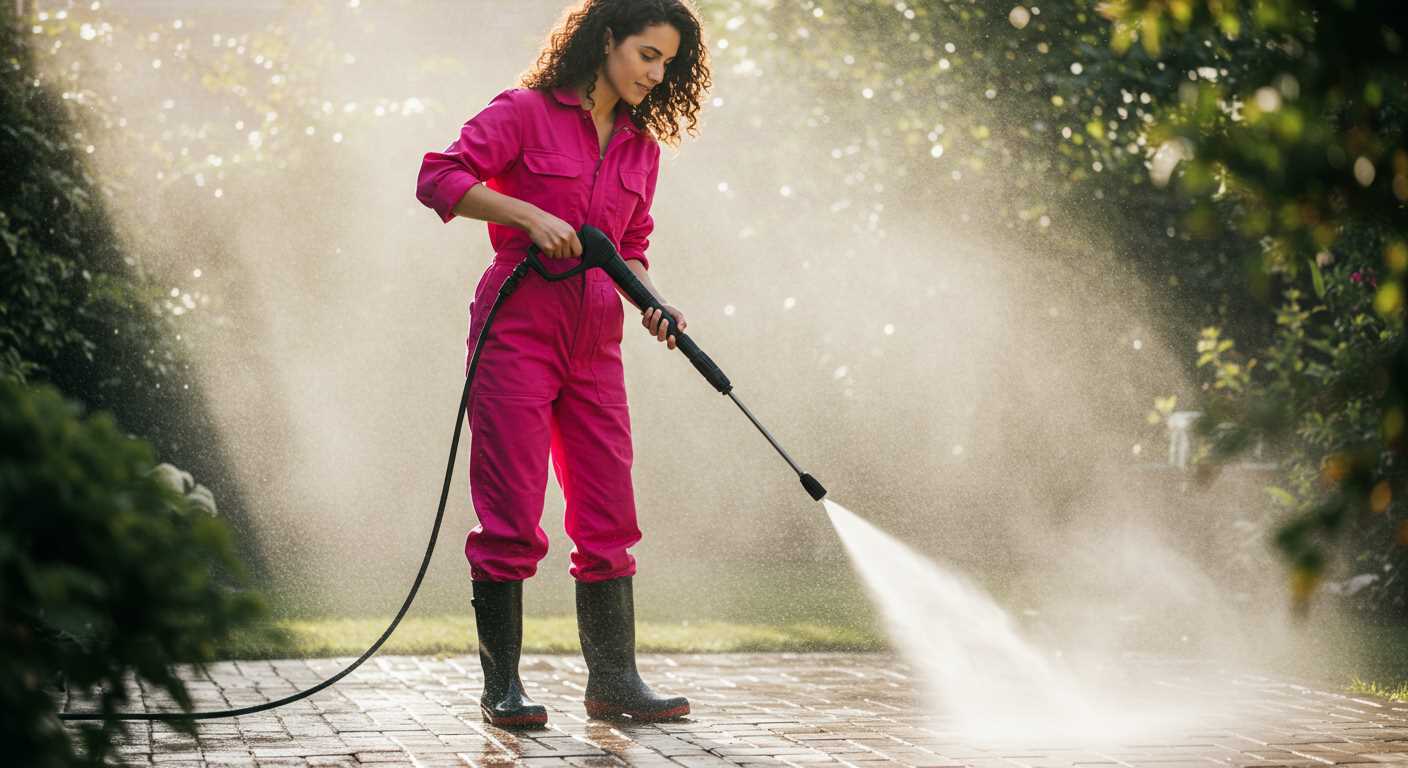

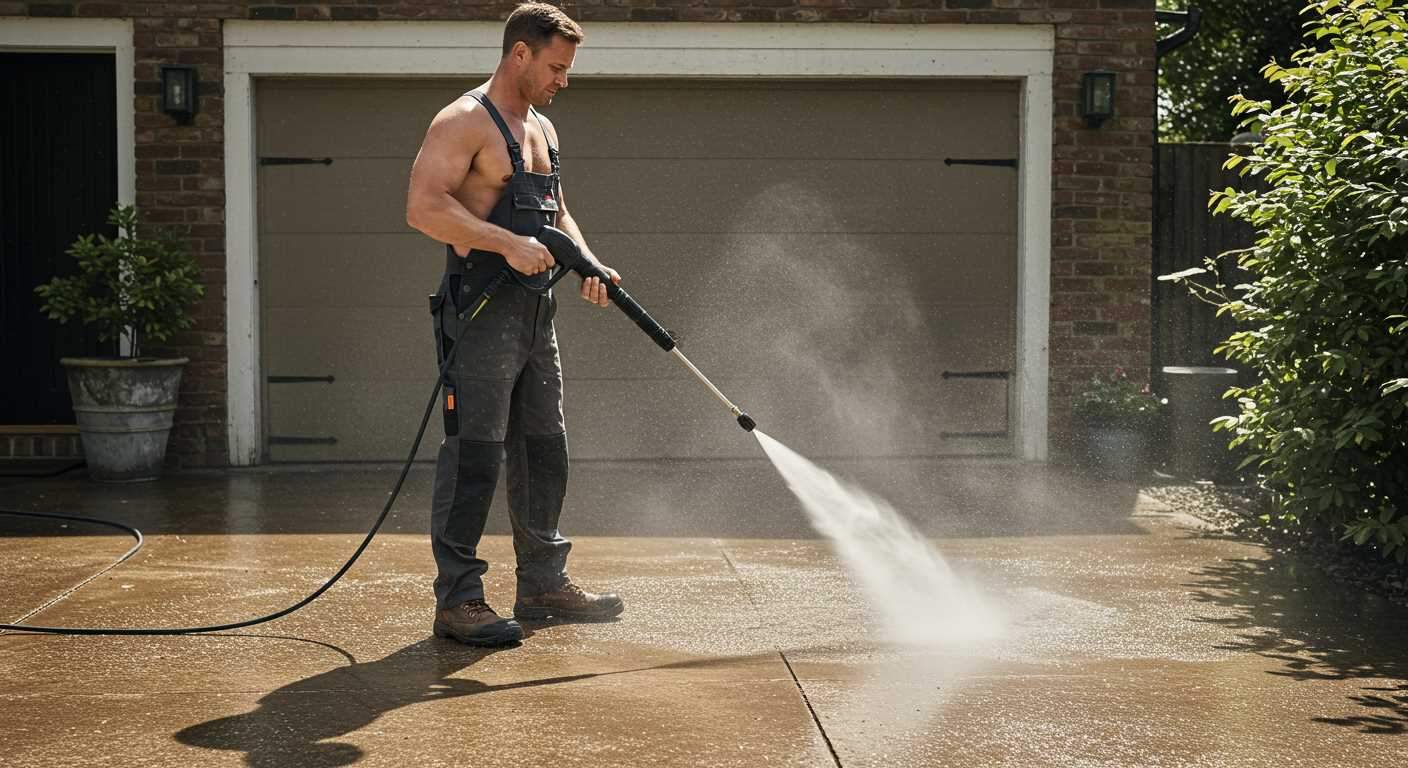
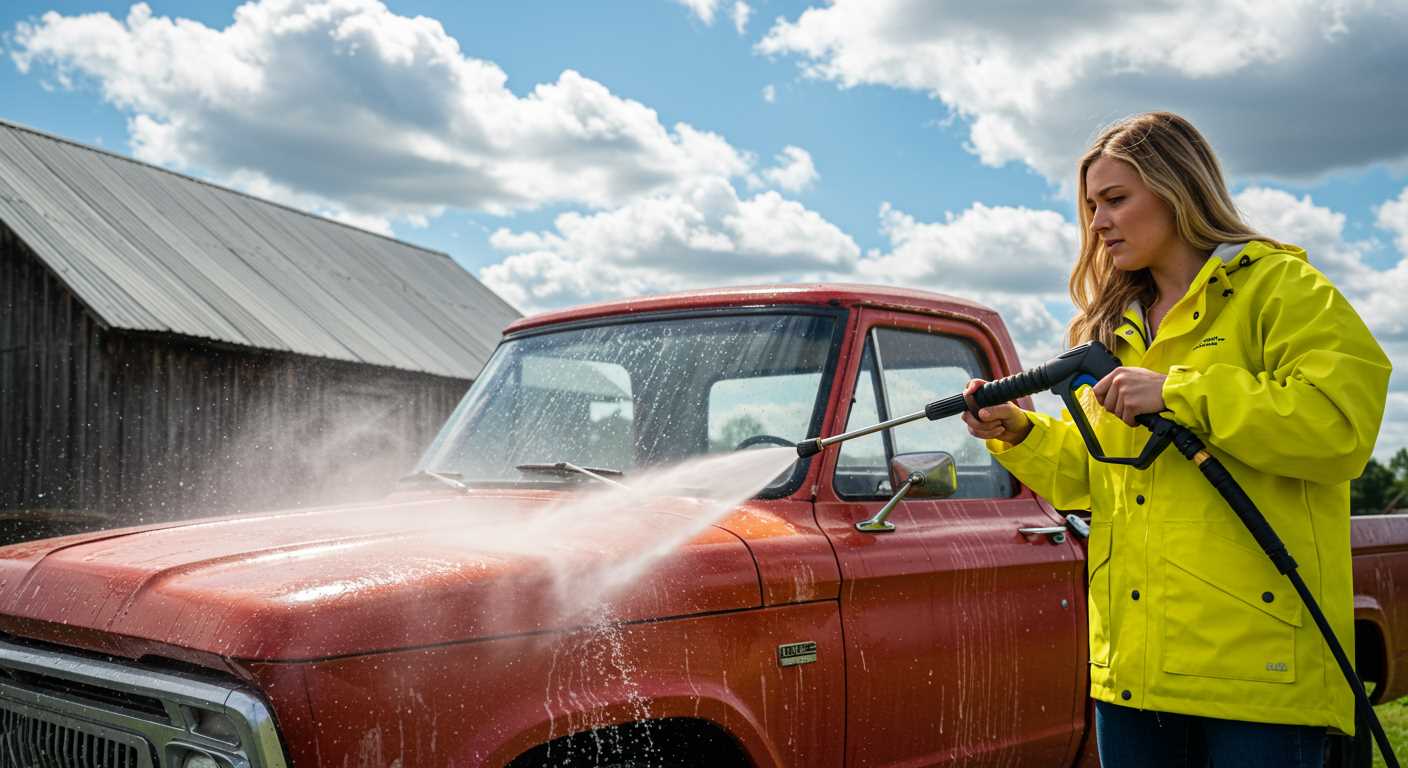
.jpg)


